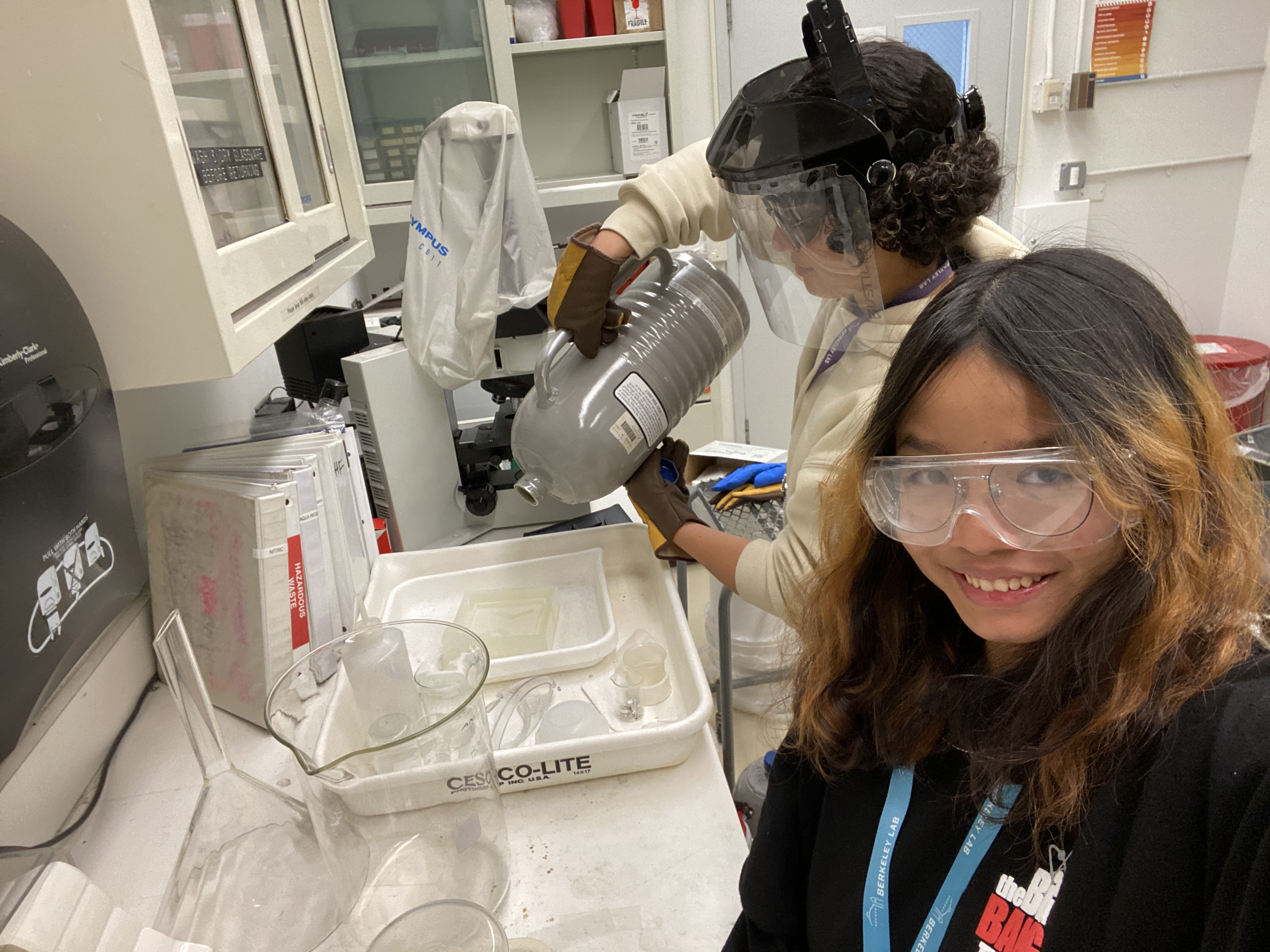Exploring Research: Halley Le ’25
When she arrived at Bennington, Halley Le ’25 was interested in chemistry and sustainability, specifically environmental chemistry or research pertaining to solar energy conversion and solar fuels. She is using her Field Work Terms to explore how chemistry intersects with these and other scientific fields.
“Exploring different sub-areas of chemistry to determine what intrigues me the most has been the plan since I got here,” she said.
During a placement with the Summer Undergraduate Research Fellowship at Purdue University the summer after her first year, Le headed to Purdue’s Lyles School of Civil Engineering to study drinking water contamination in household plumbing systems. While the opportunity helped her acquire many skills in research, such as inquiry, collaboration, and communication, it also helped her determine that environmental chemistry might not be for her.
“I learned that I am not easily enticed by some of the analytical methods we used,” she said.
This past summer, when trying to decide between a project relevant to solar energy, which would put her closer to her original interest, and a materials science one at the University of California, Berkeley, hosted by the National Science Foundation STROBE Center for Imaging Science and Technology, she considered many factors, including advice from her faculty member in chemistry, John Bullock.

“He talked about some of the materials science applications that I might run into,” said Le. “And I was like, 'cool.' So I decided to explore again.”
She’s glad she did.
The aim of her research was to characterize the mechanical properties of a novel alloy of four relatively obscure metals: niobium, tantalum, hafnium and titanium. These metals all have very high melting points when pure, but combining them into an alloy was expected to give them properties that are more useful than any of the pure metals.
The main technique Le employed for her studies was nanoindentation, a method for measuring the hardness, plasticity and elasticity indexes, and other mechanical properties of materials. Labs use the information to characterize how suitable the newly synthesized alloy might be for different uses, like automotive and aerospace engineering.
“I was able to derive the stress-strain behavior of the alloy at room temperature,” Le shared during a presentation to students and faculty this fall. Le’s research group also used electron microscopy to help determine the structure of the alloy samples. Electron microscopy provides high resolution information on the surface of the sample and the orientation of the crystal structure, which reveals valuable information on how deformation and rupture are propagated in a material.
“Electron microscopy instruments are completely new to me, and getting to understand the nuts and bolts of these imaging techniques is really eye-opening,” Le said. Her biggest challenge of the experience was designing and prototyping an experimental set up to conduct nanoindentation at cryogenic conditions. “I needed to make a liquid-tight chamber that was robust under cold temperatures,” she said. “And it also had to fit into the machine.”

She designed a container that would hold a number of things: a hard ceramic surface to put the sample on, the sample itself, and liquid nitrogen, which would keep the sample as cold as -300° Fahrenheit. She 3D printed a prototype and filled it with liquid nitrogen.
“It didn’t crack. It stayed in almost perfect shape,” she shared.
She is gratified that the professionals continuing their work at the lab will use her prototype to do future testing. But perhaps the most significant discovery is just how much she liked materials science research.
“I actually ended up really liking it, and I found that I am much more attuned to it than my original plan. I am considering it as a potential direction for graduate school.”
She is grateful to Bullock for encouraging her to deviate from her original interest.
My Bennington faculty member let me explore a lot. He’s very encouraging. He has given me some really interesting perspectives as a seasoned scientist, and I feel like I have learned a lot from him.
She also appreciates the Bennington Plan for the ways it challenges her to put her experiences into context.
“At Bennington, we build our studies using this Plan Process, where we have to articulate what we do, what we study versus what we plan to do with it, and why we’re interested in something. It has helped me whenever I jump into an experience. Whether it is environmental research or materials science research, it has helped me connect what I do in the lab with what is happening in the world around me. It really helps shape my interests for my long-term career.”
Le plans to continue work in both solar energy conversion and material science.
“Those are my two parallel interests,” said Le. Exemplifying Bennington students’ interdisciplinary mindset, she continued, “For a future summer opportunity, I either want to explore one of them or see how they intersect.”